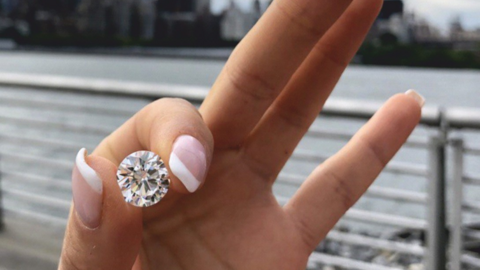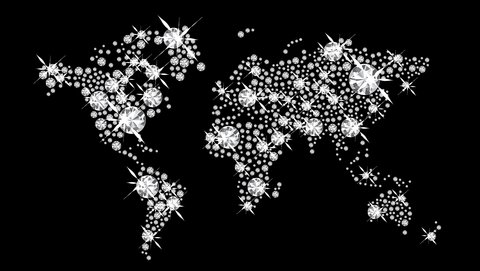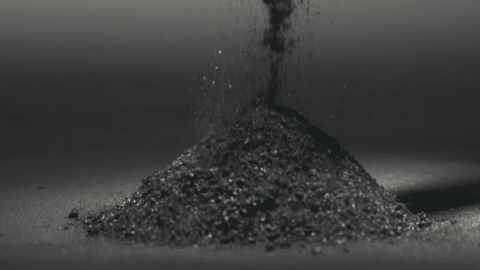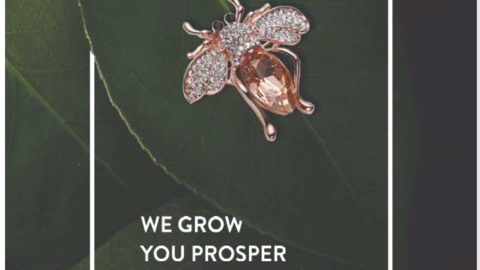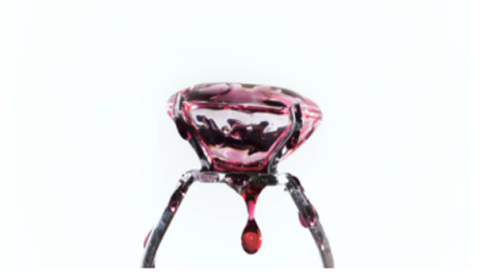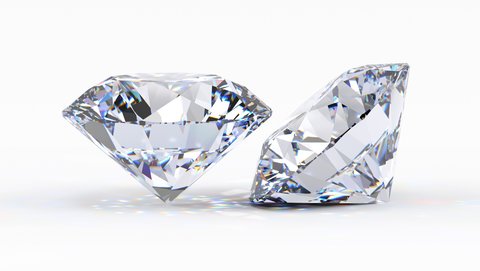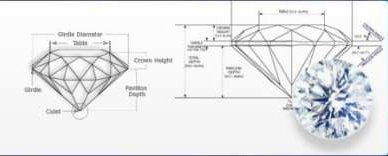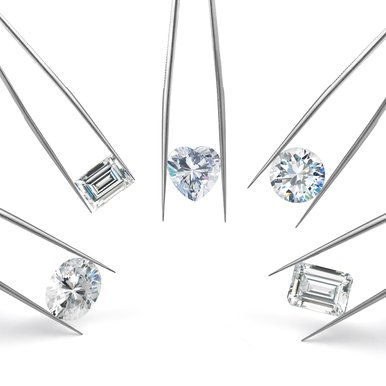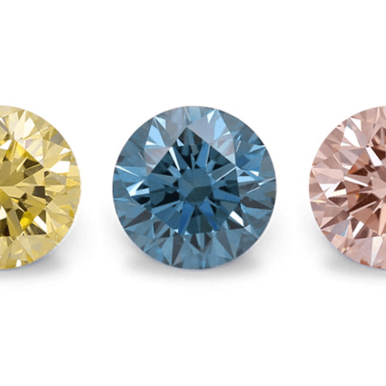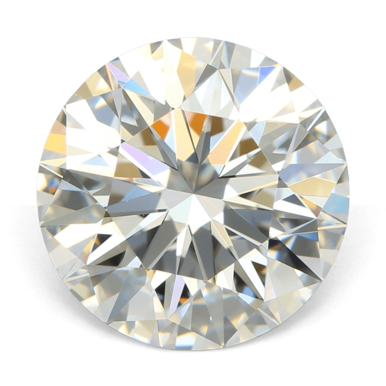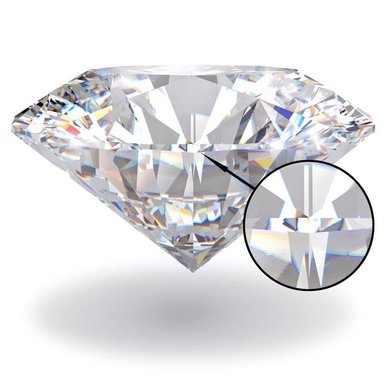D Color Lab-Grown Diamonds: The Epitome of Colorless Perfection
1. D Color Lab Grown Diamonds
When it comes to diamond color, nothing surpasses the pristine purity of a D color diamond. Sitting at the very pinnacle of the Gemological Institute of America's (GIA) color grading scale, D color diamonds represent the absolute highest standard of colorlessness in the diamond world. These exceptional gems are the rarest of the colorless diamonds, exhibiting a crystalline transparency that captures and reflects light with unparalleled brilliance. What makes D color lab-grown diamonds particularly remarkable is that they offer this same exceptional quality while being more environmentally sustainable and often more accessible than their mined counterparts. For those seeking perfection in their diamond jewelry, a D color diamond stands as the ultimate symbol of purity and excellence—a truly elite gemstone that speaks to those who accept nothing less than the absolute best.

2. What Is Diamond Color?
Diamond color actually refers to the absence of color. The most valuable diamonds are those that are completely colorless, allowing maximum light transmission and creating the most brilliant sparkle. Contrary to popular belief, most diamonds are not truly "white" but contain subtle hints of yellow or brown due to chemical impurities and structural defects in their crystal lattice.
The GIA color grading scale, the industry standard worldwide, begins with the letter D (representing completely colorless) and continues alphabetically through Z (light yellow or brown). This seemingly unusual starting point with D rather than A was deliberately chosen by the GIA when they established their system in the 1950s to differentiate it from earlier, less precise grading systems that used A, B, and C designations.
When examining diamond color, professionals evaluate the gem in controlled lighting conditions, against a white background, and often compare it to master stones of known color grades. What makes D color diamonds so special is their complete absence of any color tint—even when examined by trained gemologists under magnification and specialized lighting.
In lab-grown diamonds, achieving a perfect D color requires extraordinary precision in the growing process, as even the slightest variation in growth conditions can introduce trace elements that affect color.
3. The GIA Color Scale and D Color's Position
The GIA (Gemological Institute of America) color scale is the most respected and widely used diamond color grading system in the world. This standardized scale runs from D (completely colorless) through Z (light yellow or brown), with each letter representing a narrow range of color presence.
The grading process itself is meticulous and precisely controlled. Professional gemologists evaluate diamonds face-down against a white background under standardized lighting conditions. This method allows them to assess the body color of the diamond without the distraction of brilliance and fire that comes from the diamond's cut. The diamonds are compared to master stones—reference diamonds with established color grades—to ensure accuracy and consistency in grading.
D color diamonds occupy the most prestigious position on this scale, representing the absolute absence of color. Even expert gemologists cannot detect any color in these exceptional stones. The grading distinctions between D, E, and F (all considered "colorless") are so subtle that they require trained experts in controlled environments to differentiate.
GIA Diamond Color Scale
The industry standard for grading diamond color from colorless to light yellow
| Color Category | Grade | Description |
|---|---|---|
| Colorless | D | Absolutely colorless - the highest color grade. No detectable color even to expert gemologists under ideal conditions. |
| E | Colorless to the expert eye, with minimal traces of color that require professional grading to detect. | |
| F | Colorless to the expert eye, but slightly less rare than D and E. Color differences undetectable to the untrained eye. | |
| Near Colorless | G-J | Appears colorless to the untrained eye, especially when set in jewelry. Traces of color can be detected by gemologists. |
| Faint Yellow | K-M | Slight yellow tint visible to the naked eye, particularly when viewed from the side or in larger diamonds. |
| Very Light Yellow | N-R | Noticeable yellow tint that is visible to the naked eye even in face-up position. |
| Light Yellow | S-Z | Obvious yellow or brown coloration visible to the naked eye. Beyond Z, diamonds enter the fancy color category. |
Note: Professional gemologists grade diamonds face-down against a white background under controlled lighting conditions, comparing them with master stones of known color grades.
For lab-grown diamonds, achieving and maintaining consistent D color quality demonstrates exceptional technical precision in the growing process.

4. Unique Characteristics of D Color Diamonds
D color diamonds possess several distinctive characteristics that set them apart from all other diamond color grades. Their absolute colorlessness represents diamond perfection in its purest form. When light enters a D color diamond, it passes through without any interference from color-causing elements, resulting in exceptional brilliance and a pure white appearance that diamond connoisseurs prize above all else.
From a chemical standpoint, many D color diamonds are classified as Type IIa diamonds – an extremely rare category representing less than 1% of all natural diamonds. These stones are virtually free of nitrogen impurities, which are the most common cause of yellowish tints in diamonds. In the lab-grown diamond context, manufacturers have perfected techniques to create Type IIa equivalent diamonds with the same exceptional optical properties.
The rarity of D color cannot be overstated. Even among lab-grown diamonds, achieving perfect D colorlessness requires precise control of growing conditions. The slightest deviation in temperature, pressure, or the presence of trace elements during the growth process can result in a lower color grade.
D color diamonds look their absolute best when set in white metals that complement their colorless nature. Platinum and white gold settings enhance their pristine appearance by providing a clean, colorless backdrop that doesn't introduce any color reflection. This pairing creates a striking, contemporary look that maximizes the diamond's natural brilliance and fire.
The exceptional purity of lab-grown D color diamonds offers the added advantage of ethical sourcing. Consumers can enjoy the pinnacle of diamond color without concerns about environmental impact or conflict sourcing associated with some mined diamonds.
5. D Color vs Other Diamond Colors
Understanding how D color diamonds compare to other color grades helps buyers make informed decisions based on their priorities and budget. While D color represents absolute perfection, the differences between color grades become increasingly subtle at the highest end of the scale.
D vs. E and F Colors (Colorless Category)
To the untrained eye—and even to many jewelry professionals without specialized equipment—D, E, and F color diamonds appear identical. All three grades fall within the "colorless" category and display exceptional white brilliance. The differences are so minute that they can only be detected by expert gemologists using precise lighting, master stone comparisons, and sometimes magnification.
The price difference, however, can be significant. E color diamonds typically cost about 10-15% less than D color, while F color diamonds may be 15-20% less expensive. For many buyers, E and F colors represent an excellent value proposition, offering virtually identical appearance at a lower price point.
D vs. G-J Colors (Near Colorless Category)
G through J color diamonds fall into the "near colorless" category. While experts can detect traces of color in these diamonds, they still appear colorless to most observers, especially when set in jewelry. The price difference becomes more substantial here, with G-J diamonds often costing 25-40% less than D color stones.
D Color vs Other Diamond Colors
| Color Grade | Appearance | Rarity | Price vs D | Best For |
|---|---|---|---|---|
| D | Absolutely colorless | Rarest | - | Perfectionists, collectors, flagship jewelry pieces |
| E | Colorless | Very rare | -15% | Luxury buyers seeking value |
| F | Colorless | Rare | -20% | Those who want colorless quality at better value |
| G-H | Near colorless | More common | -30% | Excellent balance of quality and value |
| I-J | Near colorless | Common | -40%+ | Maximizing size while maintaining white appearance |
The beauty of lab-grown diamonds is that they make these premium color grades more accessible. While D color natural diamonds command extraordinary premiums due to their extreme rarity in nature, the precision of laboratory growing processes allows for more consistent production of D color lab-grown diamonds at more approachable price points.
For those seeking the absolute best, D color remains the pinnacle of diamond color quality, particularly significant for larger stones where color becomes more noticeable, and for step-cut shapes like emerald and asscher cuts which tend to display color more prominently than brilliant cuts.
6. Why Choose a D Color Lab-Grown Diamond?
Selecting a D color lab-grown diamond represents a deliberate choice to possess the absolute pinnacle of diamond color perfection. These exceptional gems offer several compelling advantages that make them worthy of consideration for the discerning buyer.
First and foremost is the emotional value of owning something truly perfect. D color diamonds symbolize the pursuit of excellence and represent an uncompromising commitment to quality. For milestone moments like engagements, significant anniversaries, or achievements, a D color diamond makes a powerful statement about how you value the occasion and the person receiving it.
From an investment perspective, D color lab-grown diamonds offer remarkable value. While all diamonds should primarily be purchased for their beauty and emotional significance, D color diamonds historically maintain their desirability better than lower color grades. The timeless appeal of colorless perfection doesn't fluctuate with fashion trends.
D color lab-grown diamonds are particularly appealing to:
- Collectors who appreciate technical perfection and the cutting-edge science behind creating flawless lab-grown stones
- Luxury buyers who want the absolute best without compromise
- Environmentally conscious consumers who value both ethical sourcing and exceptional quality
- Those creating heirloom-quality jewelry meant to be passed down through generations
Additionally, lab-grown D color diamonds offer this supreme quality at a more accessible price point than their mined counterparts, democratizing access to what was once available only to the very wealthy.
7. How to Evaluate and Buy D Color Diamonds
While color is a crucial factor in diamond selection, other characteristics are equally important in determining a diamond's overall beauty and value. When evaluating D color lab-grown diamonds, consider these key factors alongside color:
The Importance of Cut and Clarity
A D color diamond with poor cut quality won't display the brilliance and fire that make diamonds so captivating. In fact, an excellently cut G color diamond will often appear more beautiful than a poorly cut D color stone. For maximum impact, pair D color with excellent cut quality to fully showcase its exceptional light performance.
Similarly, clarity impacts a diamond's beauty and value. While D color represents perfection in color, pairing it with high clarity (VS1 or better) creates a truly spectacular gem. However, many SI1 clarity diamonds can appear "eye clean" (without visible inclusions to the naked eye) while offering better value.
Verification and Viewing Tips
When purchasing a D color diamond:
- Always request a GIA or IGI certificate that specifically grades the diamond as D color. For lab-grown diamonds, IGI certification is industry standard.
- View the diamond under different lighting conditions. D color diamonds should maintain their colorless appearance in all environments—fluorescent lighting, natural daylight, and incandescent lighting.
- Compare side-by-side if possible. Viewing a D color diamond next to an E or F can help appreciate the subtle differences.
- Examine in a face-up position. While professional grading is done face-down, you'll be seeing your diamond face-up in jewelry, so ensure it appears colorless in this orientation.
Setting Recommendations
To showcase the exceptional colorlessness of a D color diamond:
- Choose white metal settings like platinum or white gold that won't reflect any color into the diamond
- Consider tension or minimal settings that allow maximum light interaction
- For multi-stone pieces, ensure all diamonds are from the colorless range (D-F) for a consistent appearance
Questions to Ask Your Jeweler
- How was the color graded, and by which laboratory?
- Can you show me the diamond under different lighting conditions?
- What is the fluorescence rating? (Preferred: None to Faint for D color diamonds)
- What technologies were used to create this lab-grown diamond? (HPHT or CVD?)
- What post-growth treatments, if any, were applied to enhance the color?
By considering all these factors, you'll ensure your investment in a D color lab-grown diamond delivers maximum beauty and value.
Lab-Grown D Color Diamonds Collection
| SHAPE | CARAT | CUT | COLOR | CLARITY |
|---|
Register on our website to gain access to our complete diamond database.
Sign up8. Market Value and Rarity
D color diamonds command a significant premium in the marketplace due to their exceptional rarity and desirability. While natural D color diamonds represent less than 1% of all mined diamonds, lab-grown D color diamonds offer this same exceptional quality through precisely controlled growing conditions.
Price Premiums and Comparative Value
In the natural diamond market, the price jump from an F color to a D color diamond can be as high as 25-35% for the same carat weight, cut, and clarity. Lab-grown diamonds follow a similar pattern but at a compressed scale. A lab-grown D color diamond typically commands a 15-25% premium over an F color with identical specifications.
When comparing lab-grown to natural diamonds, the value proposition becomes even more compelling. A lab-grown D color diamond often costs 50-70% less than its natural counterpart with identical specifications, making what was once accessible to only the very wealthy now available to a much broader market.
Supply and Demand Dynamics
The supply of D color lab-grown diamonds, while greater than their natural counterparts, remains constrained by the technical challenges of growing perfect, colorless diamonds. Not all diamond growers have mastered the precise conditions required to consistently produce D color stones. This limited supply, coupled with increasing consumer demand for both top-quality and environmentally friendly options, has kept values relatively stable.
Long-term Value Considerations
While all diamonds should be purchased primarily for their beauty and emotional significance rather than as financial investments, D color diamonds have historically maintained their desirability better than lower color grades. Their timeless appeal isn't subject to changing fashion trends, and the technical achievement they represent in the lab-grown context adds to their lasting appeal.
For consumers, lab-grown D color diamonds offer exceptional value—providing the absolute pinnacle of diamond quality at a significantly more accessible price point than mined diamonds, while also addressing ethical and environmental concerns that are increasingly important to modern buyers.
9. How to Buy D Color Lab Grown Diamonds Online
When purchasing D color lab grown diamonds online, following a few key guidelines will ensure you receive an exceptional stone that meets your expectations. First, always verify proper certification. Look for diamonds certified by respected gemological laboratories like IGI or GIA, which confirm the diamond's color grade and other qualities through rigorous independent assessment.
Compare specifications carefully across retailers, paying close attention to the 4Cs (color, cut, clarity, and carat). While D color guarantees colorless perfection, other factors significantly impact a diamond's brilliance and value. For instance, an excellent cut can make a slightly lower color grade diamond appear more brilliant than a poorly cut D color stone.
When shopping online, prioritize retailers offering high-resolution images, 360-degree videos, and detailed specifications. These visual tools allow you to examine potential purchases thoroughly before committing. Additionally, review the seller's return policy—reputable retailers like Labrilliante offer generous evaluation periods, understanding that seeing your diamond in person is an important part of the purchase journey.
Price transparency is another crucial factor. Trustworthy retailers clearly explain their pricing structure and any additional costs like shipping or insurance. Be wary of prices that seem unusually low compared to market standards, as these may indicate compromised quality or certification issues.
Ready to find your perfect D color lab grown diamond? Browse our curated collection at Labrilliante today. Our expert gemologists have personally selected each stone for exceptional brilliance and value, and our dedicated customer service team is available to guide you through every step of your purchase. Experience the perfect combination of ethical luxury and uncompromising quality with a D color lab grown diamond from Labrilliante.
FAQ about D color Lab-Grown Diamonds
Yes, if absolute perfection matters to you. D color represents the pinnacle of diamond colorlessness. While E and F diamonds appear identical to most observers, D color guarantees zero color compromise and tends to maintain value better over time, especially in larger stones.
No, most people cannot distinguish between D, E, and F color diamonds without specialized training and equipment. These differences are detectable only by professional gemologists under controlled conditions. For practical purposes, all appear perfectly colorless in everyday settings.
Absolutely. Lab-grown diamonds have identical physical, chemical, and optical properties to mined diamonds. They are composed of carbon atoms arranged in the same crystal structure, with the only difference being their origin. Even gemologists cannot tell them apart without specialized equipment that identifies their growth patterns.
Lab-grown D color diamonds typically cost 80-90% less than mined diamonds with identical specifications (color, clarity, cut, and carat). This significant price difference has made premium quality diamonds accessible to a much broader market while offering identical beauty and performance.
No, but neither type of diamond should be purchased primarily as an investment. Lab-grown diamonds typically have lower resale values than natural diamonds, though this gap may narrow as market acceptance grows. The substantial initial savings often outweigh any resale considerations for many buyers.
No, a properly certified D color diamond will never change color. The colorless nature results from the absence of nitrogen and other impurities in the crystal structure, which is permanent. If a diamond appears to change color, it's typically due to reflections from settings, dirt accumulation, or incorrect initial grading.
The primary disadvantage is cost. The price premium for D color over E or F can be significant (10-25%), yet these differences are virtually indistinguishable to the naked eye. Many experts suggest that budget-conscious buyers consider E or F colors and allocate savings toward better cut quality or larger carat size.
Slight variations in grading standards, lighting conditions, and individual grader interpretation can lead to differences between laboratories. The GIA and IGI are the most respected labs for diamond certification, with GIA historically being more conservative in their color grading. Always request certification from reputable laboratories and be cautious of uncertified diamonds or unfamiliar certification bodies.
Lab-grown diamonds are graded using the same 4Cs criteria (cut, color, clarity, and carat) as natural diamonds by reputable gemological laboratories like IGI and GIA. They receive official certification documenting their specifications and confirming they were created in a laboratory. This certification helps ensure the quality and authenticity of your purchase
Absolutely. Lab-grown diamonds possess the same hardness (10 on the Mohs scale) and durability as mined diamonds, making them equally suitable for everyday wear and as lasting heirlooms. They don't fade, change color, or deteriorate over time, allowing them to be treasured and passed down through generations just like traditionally mined diamonds


